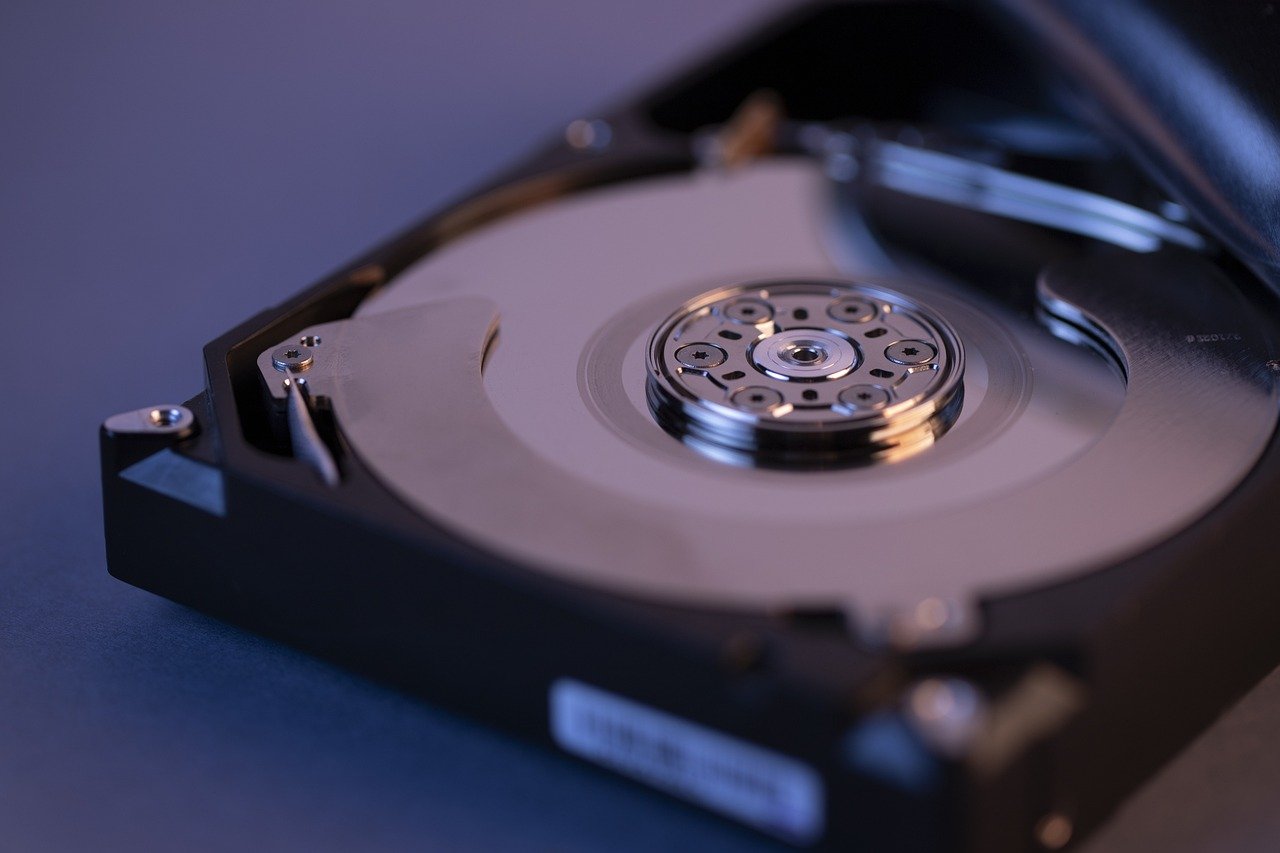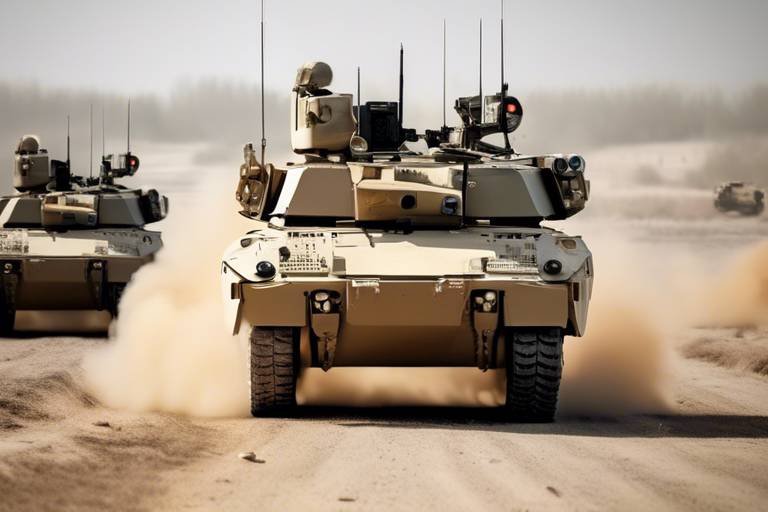Evaluating the Use of Exoskeleton Technology in Military Applications
As we enter a new era of technology, the integration of exoskeleton technology into military applications is becoming increasingly relevant. Imagine a soldier equipped with a wearable robotic suit that enhances their strength, endurance, and overall performance on the battlefield. This isn't science fiction; it's a reality that is being explored and developed. Exoskeletons are designed to augment human capabilities, enabling soldiers to carry heavy loads, traverse challenging terrains, and reduce fatigue during prolonged missions. In this article, we will delve into the fascinating world of exoskeletons, examining their benefits, challenges, and the exciting future they hold for enhancing soldier performance and safety.
Exoskeleton technology refers to a class of wearable robotic systems that are engineered to support and enhance human movement. These systems typically consist of a combination of sensors, motors, and actuators that work in tandem with the user's body. The relevance of exoskeletons in military operations cannot be overstated; they have the potential to revolutionize how soldiers operate in various environments. By providing physical assistance, exoskeletons can help mitigate the physical demands placed on soldiers, thereby improving their operational effectiveness and overall mission success.
One of the most compelling aspects of exoskeleton technology is the multitude of benefits it offers to military personnel. From increased strength to reduced fatigue, these systems can significantly enhance a soldier's performance in the field. Imagine a scenario where a soldier can carry an additional 100 pounds of gear without feeling the strain. This is not merely a dream; it's a tangible advantage that exoskeletons can provide. Furthermore, the ability to maintain peak performance during long missions can be a game-changer in high-stakes situations.
Exoskeletons are not just about lifting heavy weights; they can also enhance a soldier's mobility and agility. In combat situations, the ability to move quickly and efficiently across difficult terrains can mean the difference between life and death. Specific designs of exoskeletons focus on optimizing movement, allowing soldiers to navigate obstacles with ease. This technology is akin to giving soldiers a superpower, enabling them to leap over barriers or sprint across uneven ground without the usual physical limitations.
One of the critical features of military exoskeletons is their terrain adaptability. These systems are engineered to handle various environments, from urban settings filled with debris to rugged, mountainous landscapes. By employing advanced sensors and adaptive algorithms, exoskeletons can adjust their support mechanisms in real-time, ensuring that soldiers can maintain their balance and agility regardless of the terrain. This adaptability is essential for mission success, as it allows soldiers to focus on their objectives rather than the challenges posed by their surroundings.
Another significant aspect of exoskeleton technology is its load-bearing capabilities. Soldiers often carry heavy equipment, which can lead to fatigue and physical strain over time. Exoskeletons are designed to distribute weight evenly across the body, significantly reducing the burden on the wearer's muscles and joints. This feature not only enhances physical well-being but also enables soldiers to carry more gear, thereby increasing their operational effectiveness. It’s like having a personal assistant that helps you carry your backpack, allowing you to focus on the mission ahead.
Despite the numerous advantages, the implementation of exoskeleton technology in military contexts is not without its challenges. There are significant technical, logistical, and ethical hurdles that must be addressed before these systems can be widely adopted. For instance, the technology must be robust enough to withstand the rigors of military operations, and the costs associated with research, development, and deployment can be substantial. Moreover, ethical considerations regarding the use of such advanced technologies in combat scenarios must also be taken into account.
The financial implications of integrating exoskeleton technology into military units are substantial. The costs involved in research, development, and deployment can be daunting, leading to tough decisions regarding budget allocation. It’s essential for military decision-makers to understand the long-term benefits of these systems to justify the initial investment. After all, investing in technology that enhances soldier safety and effectiveness can lead to significant savings in the long run.
Securing funding for exoskeleton projects is crucial for their advancement. Military budgets are often tight, and prioritizing innovative technologies like exoskeletons can be a challenge. However, understanding the potential of these systems to transform military operations can help in advocating for necessary funding. It's a bit like investing in a high-quality tool that, while expensive upfront, pays off in efficiency and effectiveness over time.
Evaluating the return on investment (ROI) for exoskeleton technology is vital for military decision-makers. The benefits of these systems can outweigh the costs, especially when considering the enhanced operational effectiveness and reduced injury rates among soldiers. By investing in exoskeletons, military units can not only improve their combat readiness but also ensure the safety and well-being of their personnel.
As technology continues to evolve, so too do the possibilities for exoskeleton applications in the military. Future advancements may lead to even more sophisticated systems that integrate artificial intelligence and machine learning, allowing for greater adaptability and efficiency. The potential impact on military effectiveness and soldier safety is immense, paving the way for a new generation of combat capabilities.
- What are exoskeletons? Exoskeletons are wearable robotic systems designed to enhance human capabilities, providing support for movement and load-bearing tasks.
- How do exoskeletons benefit soldiers? They offer increased strength, reduced fatigue, and enhanced mobility, allowing soldiers to perform better in the field.
- What challenges exist in implementing exoskeleton technology? Challenges include technical robustness, logistical issues, ethical considerations, and significant costs.
- What is the future of exoskeleton technology in the military? The future may see advancements in AI integration, leading to more adaptable and efficient systems for soldiers.

Introduction to Exoskeleton Technology
Exoskeleton technology is revolutionizing the way we think about human capabilities, especially in demanding environments like the military. Imagine strapping on a suit that not only enhances your strength but also reduces fatigue and increases endurance. This is not science fiction; it’s the reality of modern exoskeleton systems. These wearable robotic devices are designed to work in harmony with the human body, amplifying its natural abilities and making tasks that once seemed impossible, achievable.
At its core, exoskeleton technology consists of several key components: sensors, actuators, and a control system. The sensors detect the wearer’s movements and intentions, while the actuators provide the necessary force to assist or augment those movements. The control system interprets the data from the sensors and coordinates the actuators to ensure smooth and intuitive operation. This intricate interplay of technology allows soldiers to carry out their missions with enhanced efficiency and effectiveness.
The relevance of exoskeleton technology in military operations cannot be overstated. As soldiers are often required to carry heavy loads over long distances and challenging terrains, the physical demands placed on them can lead to fatigue and decreased performance. Exoskeletons address these issues head-on by providing mechanical support that enables soldiers to carry more weight without compromising their physical well-being. In essence, these systems act as a force multiplier, enhancing the capabilities of individual soldiers and improving overall mission success.
Moreover, the integration of exoskeleton technology into military settings is not just about boosting performance; it’s also about safety. By reducing the physical strain on soldiers, exoskeletons can help prevent injuries that are common in the field, such as musculoskeletal disorders. This is particularly important in a military context where every soldier's health and readiness are crucial for operational success.
As we delve deeper into the benefits and applications of exoskeleton technology, it's essential to recognize that while the potential is immense, there are also challenges that come with its implementation. From technical hurdles to ethical considerations, the journey toward widespread adoption of exoskeletons in the military is complex and multifaceted. However, the promise of enhanced soldier performance and safety makes this journey one worth taking.

Benefits of Exoskeletons for Soldiers
The integration of exoskeleton technology into military operations is not just a futuristic concept; it is a transformative reality that can significantly enhance the capabilities of soldiers on the battlefield. Imagine a soldier equipped with a suit that amplifies their strength and endurance, allowing them to carry heavy loads over long distances without succumbing to fatigue. This is not science fiction; it’s the promise of exoskeletons. These wearable robotic systems are designed to augment human abilities, providing a range of benefits that can improve operational effectiveness in challenging environments.
One of the most compelling advantages of exoskeletons is the increased strength they offer. Soldiers often carry heavy equipment, which can weigh upwards of 100 pounds. With the aid of exoskeletons, they can lift and transport these loads with ease. This strength enhancement not only reduces the physical strain on soldiers but also minimizes the risk of injuries related to heavy lifting. Furthermore, the ability to carry more gear can lead to better preparedness in combat situations, allowing soldiers to have essential equipment readily available when needed.
Additionally, exoskeletons can help reduce fatigue. Traditional military operations require soldiers to be on their feet for extended periods, often leading to exhaustion. By redistributing the weight of their gear and providing mechanical assistance, exoskeletons can significantly alleviate the physical burden on soldiers. This reduction in fatigue means that soldiers can maintain their performance levels longer, which is crucial during prolonged missions where every second counts. Imagine being able to march for hours without feeling like you’ve run a marathon; that’s the potential exoskeletons bring to the table.
Enhanced endurance is another key benefit. With the aid of exoskeletons, soldiers can navigate through challenging terrains with greater ease. These suits can be designed to optimize movement, allowing for quicker responses in combat scenarios. Whether it’s sprinting across a battlefield or carefully maneuvering through dense urban environments, exoskeletons can provide the agility needed to adapt to various situations. The technology can be tailored to improve mobility in specific contexts, ensuring that soldiers are not only strong but also quick and agile.
Exoskeletons are engineered to enhance a soldier's mobility and agility, which is essential in combat situations. For instance, certain designs focus on optimizing movement across difficult terrains. Imagine trying to navigate a rocky landscape or a muddy battlefield; traditional gear can weigh you down and slow you down. However, with an exoskeleton, soldiers can glide over obstacles with ease, maintaining their speed and efficiency. This capability can be the difference between life and death in a fast-paced combat environment.
The ability of exoskeletons to adapt to various terrains is crucial for military applications. Whether soldiers are operating in urban settings, dense forests, or rugged mountains, exoskeleton technology is being developed to handle these diverse environments. For example, advanced sensors can adjust the suit’s joints and movements based on the terrain, providing real-time assistance. This adaptability not only enhances mobility but also boosts confidence, allowing soldiers to focus on their mission rather than their physical limitations.
One of the standout features of military exoskeletons is their load-bearing capacity. These systems are designed to support heavy loads, enabling soldiers to carry equipment such as weapons, medical supplies, and communication devices without compromising their physical well-being. This capability is particularly beneficial in situations where every ounce matters. By allowing soldiers to carry more without the risk of injury, exoskeletons enhance operational readiness and effectiveness.
In summary, the benefits of exoskeletons for soldiers are profound. From increased strength and reduced fatigue to enhanced endurance and improved mobility, these systems offer a comprehensive solution to many of the challenges faced by military personnel today. As technology continues to evolve, the potential for exoskeletons to revolutionize soldier performance and safety is immense, paving the way for a new era in military operations.
- What is an exoskeleton? An exoskeleton is a wearable robotic suit designed to enhance human strength and endurance.
- How do exoskeletons help soldiers? They provide increased strength, reduce fatigue, and improve mobility, allowing soldiers to perform better in challenging environments.
- Are exoskeletons affordable for military use? While initial costs can be high, the potential for improved operational efficiency and reduced injury rates may justify the investment.
- What are the limitations of exoskeletons? Challenges include technical issues, logistical hurdles, and the need for extensive training to use the technology effectively.

Improved Mobility and Agility
When it comes to the battlefield, mobility and agility are paramount. Imagine a soldier, donned in a high-tech exoskeleton, navigating through a dense forest or scaling the steep inclines of a rocky terrain with the grace of a mountain goat. This isn't just a futuristic dream; it's becoming a reality thanks to advancements in exoskeleton technology. These wearable robotic systems are designed to amplify human movement, allowing soldiers to traverse challenging environments with ease.
The key to improved mobility lies in the sophisticated design of these exoskeletons. They are equipped with sensors and actuators that respond to the user's movements, providing support and enhancing their natural capabilities. For instance, when a soldier bends their knees to crouch or leap, the exoskeleton assists by providing additional power, making those movements less strenuous. This synergy between human and machine can significantly reduce the risk of injury, especially in high-stress situations where every second counts.
Moreover, exoskeletons can be tailored for specific military applications. For example, some designs focus on speed, allowing soldiers to sprint across open fields or dodge incoming fire. Others prioritize stability, ensuring that troops can maintain their footing on uneven ground. This adaptability is crucial, as the battlefield is anything but predictable. By enhancing a soldier's ability to move swiftly and safely, exoskeletons can provide a tactical advantage that could mean the difference between success and failure in combat.
To illustrate the impact of exoskeleton technology on mobility, consider the following table that outlines some of the key features and benefits:
| Feature | Benefit |
|---|---|
| Joint Assistance | Reduces strain and enhances movement fluidity |
| Terrain Adaptation | Allows for effective navigation in diverse environments |
| Enhanced Stability | Minimizes the risk of falls and injuries |
| Speed Boost | Increases the soldier's ability to evade threats |
In addition to these features, the psychological benefits of improved mobility cannot be overlooked. Soldiers equipped with exoskeletons may experience a boost in confidence, knowing they have the tools to handle the toughest terrains and situations. This enhanced mindset can lead to better decision-making and performance under pressure. In a world where every moment counts, the ability to move quickly and efficiently can be a game-changer.
In conclusion, the integration of exoskeleton technology into military operations is not just about lifting heavy loads; it's about transforming how soldiers engage with their environment. By enhancing mobility and agility, exoskeletons are paving the way for a new era of soldier effectiveness on the battlefield. As we continue to innovate and refine these technologies, the possibilities for their application are limited only by our imagination.
- What are exoskeletons? Exoskeletons are wearable robotic systems designed to enhance human capabilities, particularly strength and mobility.
- How do exoskeletons improve soldier performance? They provide support and assistance in movement, reducing fatigue and the risk of injury while increasing operational effectiveness.
- What are the challenges of implementing exoskeletons in the military? Challenges include high costs, technical limitations, and potential ethical concerns related to their use in combat.
- What is the future of exoskeleton technology in the military? The future looks promising, with ongoing advancements that could further enhance soldier safety and effectiveness.

Terrain Adaptability
When we think about the battlefield, it’s not just about the soldiers but also the ground they traverse. The of exoskeleton technology is a game changer. Imagine striding over rocky hills or sprinting across sandy dunes with the ease of a gazelle. This is what exoskeletons aim to achieve. They are not merely robotic suits; they are designed to enhance a soldier’s natural abilities, allowing them to navigate diverse environments with confidence and agility.
Exoskeletons are engineered with advanced sensors and algorithms that provide real-time feedback, enabling soldiers to adjust their movements based on the terrain they encounter. Whether it’s a dense forest, an urban landscape, or a steep incline, these systems can adapt dynamically. For instance, when moving through thick underbrush, the exoskeleton can lower its center of gravity, improving stability and balance. In contrast, when crossing open fields, it can enhance speed and stride length, making soldiers faster and more efficient.
To illustrate this adaptability, consider the following table, which highlights different terrains and how exoskeletons can be optimized for each:
| Terrain Type | Exoskeleton Features | Benefits |
|---|---|---|
| Urban | Compact design, agility enhancements | Improved maneuverability in tight spaces |
| Rugged | Stabilization systems, traction control | Enhanced balance over uneven surfaces |
| Sandy | Weight distribution adjustments | Reduced fatigue while moving |
| Forest | Height adjustments, obstacle navigation | Better handling of natural barriers |
But it’s not just about the mechanics; it’s about how these features translate into real-world advantages. For example, in an urban combat scenario, a soldier equipped with an adaptable exoskeleton can quickly navigate through debris and obstacles, allowing for swift tactical maneuvers. In more challenging terrains like mountains, the exoskeleton can help distribute the weight of heavy gear, enabling soldiers to carry more without succumbing to fatigue.
Moreover, the integration of into exoskeleton technology also paves the way for enhanced training simulations. Soldiers can practice in varied environments while wearing the exoskeletons, allowing them to become accustomed to the technology before entering real combat situations. This not only boosts their confidence but also significantly improves their operational readiness.
In conclusion, the terrain adaptability of exoskeletons is not just a feature; it’s a necessity. As military operations become increasingly complex, the ability to traverse diverse environments efficiently and effectively could be the difference between success and failure on the battlefield. With ongoing advancements in technology, the future looks promising for soldiers who will benefit from these remarkable innovations.
- What are exoskeletons? Exoskeletons are wearable robotic systems designed to enhance human capabilities, particularly strength and endurance.
- How do exoskeletons improve mobility in varying terrains? They utilize advanced sensors and algorithms to adjust movements in real-time based on the terrain, enhancing balance, stability, and speed.
- Are exoskeletons safe for soldiers? Yes, they are designed with safety features and undergo rigorous testing to ensure they can withstand the demands of military operations.
- What is the future of exoskeleton technology in the military? The future is bright, with ongoing research focused on improving adaptability, efficiency, and integration with other military technologies.

Load-Bearing Capabilities
One of the most remarkable features of military exoskeletons is their load-bearing capacity. Imagine a soldier, equipped with heavy gear and supplies, traversing a challenging battlefield. The physical strain can be immense, often leading to fatigue and decreased operational effectiveness. However, with the integration of exoskeleton technology, this scenario transforms dramatically. These wearable robotic systems are designed to redistribute weight, allowing soldiers to carry much heavier loads without the usual physical toll. This enhancement not only improves the soldier's endurance but also significantly boosts their overall performance in the field.
The mechanics behind load-bearing exoskeletons are fascinating. They typically utilize a combination of actuators, sensors, and control systems to assist with lifting and carrying. For example, when a soldier bends down to pick up a heavy object, the exoskeleton detects this movement and activates its actuators, providing the necessary force to lift the load. This means that instead of straining every muscle, soldiers can rely on technology to support them, preserving their energy for critical tasks.
The implications of this technology are profound. Consider the following benefits of load-bearing capabilities in military applications:
- Reduced Physical Strain: Soldiers can carry equipment that would typically be too heavy, significantly lowering the risk of injuries.
- Increased Mission Flexibility: With enhanced load capacity, soldiers can adapt to various mission requirements without being hindered by their gear.
- Enhanced Team Efficiency: Teams can operate more effectively when each member can carry their fair share of equipment without compromising their stamina.
Moreover, the design of these exoskeletons is continually evolving. Manufacturers are focusing on creating systems that are not only robust but also lightweight and user-friendly. The goal is to ensure that soldiers can wear these devices for extended periods without discomfort. This is crucial in military operations where every ounce of weight matters, and comfort can mean the difference between success and failure on the battlefield.
In addition to enhancing physical capabilities, the load-bearing features of exoskeletons also contribute to strategic advantages. For instance, during long missions, soldiers equipped with exoskeletons can carry essential supplies, medical kits, or even ammunition without the fear of fatigue setting in. This capacity allows for longer missions with less downtime, ultimately leading to a more effective military force in the field.
In conclusion, the load-bearing capabilities of exoskeleton technology represent a significant leap forward in military equipment. By alleviating the physical burdens placed on soldiers, these systems not only enhance performance but also contribute to the overall safety and efficiency of military operations. As research and development continue, we can expect even more innovative solutions that will redefine what soldiers are capable of achieving in the line of duty.
- What are exoskeletons, and how do they work? Exoskeletons are wearable robotic systems that enhance human capabilities by providing support and strength through mechanical assistance.
- How do load-bearing exoskeletons benefit soldiers? They help reduce physical strain, increase endurance, and allow soldiers to carry heavier loads without compromising their safety and effectiveness.
- Are exoskeletons comfortable to wear for long periods? Yes, manufacturers are focused on creating lightweight and user-friendly designs to ensure comfort during extended use.
- What challenges exist in implementing exoskeleton technology in the military? Challenges include high costs, technical complexities, and the need for extensive training for soldiers to use the technology effectively.

Challenges in Implementation
While the potential of exoskeleton technology in military applications is undeniably exciting, there are several significant challenges that must be navigated before widespread adoption can occur. One of the primary hurdles is the technical complexity involved in creating systems that are not only effective but also reliable and safe for soldiers to use in high-stress environments. These wearable robotic systems must be able to withstand the rigors of combat, including exposure to harsh weather conditions, rough terrains, and the physical demands of military operations.
Furthermore, the integration of exoskeletons into existing military operations presents logistical challenges. Training personnel to effectively use this technology is crucial, as improper usage could lead to injuries or operational failures. This training requires time, resources, and a shift in current military practices, which can be met with resistance from traditionalists who may be skeptical about the necessity of such innovations.
Another critical aspect to consider is the ethical implications of using exoskeletons in combat. Questions arise about the fairness of enhancing soldier capabilities and the potential for misuse. For instance, could these technologies create an uneven playing field in warfare? Will they lead to increased expectations for performance, putting more pressure on soldiers? Addressing these ethical dilemmas is essential to ensure that the adoption of exoskeleton technology aligns with military values and standards.
In addition to these challenges, the cost of development cannot be overlooked. Creating advanced exoskeletons requires substantial investment in research and development, which may not always yield immediate results. Military budgets are often tight, and allocating funds for innovative technologies like exoskeletons can be a difficult sell. Decision-makers must weigh the potential benefits against the financial burden of integrating such systems into their ranks.
To summarize, the implementation of exoskeleton technology in military contexts faces a trifecta of challenges: technical complexity, logistical hurdles, and ethical considerations. Each of these factors must be carefully navigated to ensure that the technology can be effectively integrated into military operations without compromising safety, efficiency, or ethical standards.
- What are exoskeletons? Exoskeletons are wearable robotic systems designed to enhance human strength, endurance, and mobility.
- How do exoskeletons benefit soldiers? They can increase strength, reduce fatigue, and improve mobility, allowing soldiers to perform better in challenging environments.
- What challenges are associated with implementing exoskeleton technology? Key challenges include technical complexity, logistical issues, ethical considerations, and high costs of development.
- Are there ethical concerns regarding exoskeleton use in the military? Yes, there are concerns about fairness in combat, increased expectations for soldier performance, and potential misuse of the technology.
- How can military budgets accommodate exoskeleton development? Decision-makers need to prioritize innovative technologies and demonstrate the long-term benefits to secure funding for these projects.

Cost Considerations
When discussing the integration of exoskeleton technology into military operations, one cannot overlook the significant financial implications involved. The journey from concept to deployment is not just a matter of innovation; it's also about securing the necessary funding to turn these high-tech dreams into reality. As military budgets are often tightly controlled, understanding the costs associated with research, development, and implementation of exoskeletons becomes essential.
To break it down, the costs can be categorized into several key areas:
- Research and Development (R&D): Developing cutting-edge exoskeletons requires extensive R&D efforts. This phase includes prototyping, testing, and refining designs to ensure they meet the rigorous demands of military use.
- Manufacturing: Once a design is finalized, the manufacturing process begins. This involves not just the physical production of the exoskeletons but also the sourcing of high-quality materials that can withstand extreme conditions.
- Training: Soldiers will need proper training to effectively use exoskeletons. This includes understanding the technology, maintenance, and operational tactics that incorporate these systems.
- Maintenance and Upgrades: Like any advanced technology, exoskeletons will require ongoing maintenance and periodic upgrades to keep them functioning optimally.
While these costs might seem daunting, military decision-makers must also consider the potential return on investment (ROI). The long-term benefits of enhanced soldier performance, reduced injury rates, and improved operational effectiveness can far outweigh the initial financial outlay. For instance, if exoskeletons can significantly reduce fatigue and injury during missions, the military could see a decrease in medical costs and an increase in mission success rates.
Moreover, investing in exoskeleton technology could lead to a competitive advantage on the battlefield. As other nations explore similar technologies, maintaining a lead in this area could be crucial for national security. Thus, while the costs are substantial, the potential benefits in terms of soldier safety and operational efficiency present a strong case for investment.
It’s essential for military leaders to prioritize funding for innovative technologies like exoskeletons. This means not just allocating budget but also advocating for the importance of these advancements in enhancing military capabilities. As we look to the future, the question remains: will the military embrace this technology and invest wisely to reap the rewards?
Q1: What are the primary costs associated with exoskeleton technology in the military?
A1: The primary costs include research and development, manufacturing, training for soldiers, and ongoing maintenance and upgrades.
Q2: How can exoskeleton technology improve military operations?
A2: Exoskeletons enhance soldier strength, reduce fatigue, and improve mobility, which can lead to increased operational effectiveness and reduced injury rates.
Q3: What is the potential return on investment for exoskeletons?
A3: The potential ROI includes decreased medical costs, improved mission success rates, and a competitive advantage over adversaries.

Funding and Budget Allocation
When it comes to integrating exoskeleton technology into military units, the question of funding and budget allocation is paramount. The development and deployment of these advanced systems require significant financial resources, which can often be a challenge in the context of military budgets that are already stretched thin. To understand the financial landscape, we must first consider the various stages of funding that are involved in bringing exoskeletons from concept to reality.
Initially, funding is needed for research and development (R&D), where innovative ideas are transformed into functional prototypes. This phase often involves collaboration with private sector companies and research institutions, which can drive up costs. Once a prototype is developed, the next phase involves testing and evaluation, which also requires additional funding to ensure that the technology meets military standards.
Moreover, the allocation of funds is not just about immediate costs; it also involves long-term financial planning. Military budgets are typically allocated on an annual basis, and securing funding for exoskeletons can be competitive. Decision-makers must prioritize projects that promise to enhance operational effectiveness while also considering the return on investment (ROI). Here are some key factors that influence funding and budget allocation:
- Operational Necessity: Projects that address urgent operational needs are more likely to receive funding.
- Technological Advancements: Innovations that demonstrate significant potential for improving soldier performance can attract investment.
- Strategic Partnerships: Collaborations with private companies and research institutions can provide additional funding opportunities.
In light of these factors, military leaders must engage in strategic planning to ensure that exoskeleton technology is not just a fleeting experiment but a sustainable investment. This means looking at how these technologies can be integrated into existing systems and how they can improve overall mission success rates.
Additionally, as budgets are allocated, it’s essential to conduct thorough evaluations of past projects to inform future decisions. Historical data can provide insights into which technologies yielded the best results and which did not meet expectations. This analysis can be crucial in justifying funding requests to higher authorities.
In summary, the funding and budget allocation for exoskeleton technology in military applications is a complex process influenced by various factors. It requires a balance between immediate operational needs and long-term strategic goals. As the military continues to explore the potential of exoskeletons, effective financial planning will be essential to harnessing their full capabilities.
- What are exoskeletons? Exoskeletons are wearable robotic systems designed to enhance human strength and endurance.
- How do exoskeletons benefit soldiers? They provide increased strength, reduced fatigue, and enhanced mobility, allowing soldiers to perform better in challenging environments.
- What are the challenges in implementing exoskeleton technology? Challenges include technical limitations, logistical issues, and the need for ethical considerations.
- How is funding allocated for exoskeleton projects? Funding is allocated based on operational necessity, potential ROI, and strategic partnerships.
- What is the future of exoskeleton technology in the military? The future holds promising advancements that could further enhance soldier effectiveness and safety.

Return on Investment
Evaluating the Return on Investment (ROI) for exoskeleton technology is crucial for military decision-makers, especially when considering the significant financial resources required for research, development, and deployment. The military is always on the lookout for ways to enhance operational effectiveness while ensuring the safety and well-being of its personnel. So, how do we measure the ROI of such cutting-edge technology? It’s not just about the upfront costs; it’s about the long-term benefits that can dramatically shift the dynamics of military operations.
First and foremost, we need to consider the cost savings associated with reduced injury rates. By equipping soldiers with exoskeletons, we can potentially decrease the incidence of musculoskeletal injuries, which are common in military settings due to heavy lifting and prolonged physical exertion. Fewer injuries mean lower medical costs, reduced downtime for personnel, and ultimately, a more effective fighting force. Imagine a battalion where soldiers can operate at peak performance without the burden of fatigue or injury—this is where the ROI starts to become apparent.
Furthermore, exoskeletons can enhance mission success rates. When soldiers are equipped to carry heavier loads over challenging terrains without compromising their physical health, they can achieve objectives more efficiently and effectively. Consider a scenario where a unit is tasked with transporting critical supplies to a remote location. With exoskeletons, soldiers can cover greater distances faster, ensuring that vital resources reach their destination on time. This efficiency can lead to better operational outcomes, which, in turn, translates to a higher ROI.
To illustrate this point, let’s take a look at a hypothetical cost-benefit analysis:
| Item | Cost (in USD) | Benefit |
|---|---|---|
| Exoskeleton Development | $5,000,000 | Advanced mobility and load-bearing capabilities |
| Injury Reduction | $2,000,000 | Savings from decreased medical expenses |
| Increased Mission Success | N/A | Improved operational efficiency and outcomes |
| Total Estimated ROI | N/A | Substantial long-term savings and enhanced effectiveness |
As we can see, while the initial investment might be steep, the potential savings from reduced injuries and increased mission success can create a favorable ROI over time. Additionally, the technological advancements in exoskeleton design are likely to lead to even more significant benefits as the technology evolves. The military must prioritize funding for such innovations, as the long-term advantages can greatly outweigh the costs.
In conclusion, the ROI of exoskeleton technology in military applications is not just a matter of dollars and cents; it’s about enhancing the capabilities of soldiers, ensuring their safety, and improving the overall effectiveness of military operations. As we look to the future, investing in this technology may very well be the key to maintaining a competitive edge on the battlefield.
- What are exoskeletons? Exoskeletons are wearable robotic systems designed to enhance human strength and endurance.
- How do exoskeletons benefit soldiers? They reduce fatigue, improve mobility, and allow soldiers to carry heavier loads more efficiently.
- What challenges exist in implementing exoskeleton technology? Technical, logistical, and ethical challenges must be addressed before widespread adoption.
- Is the investment in exoskeletons worth it? Yes, the potential for reduced injuries and increased mission success can lead to a favorable return on investment.

The Future of Exoskeleton Technology
The future of exoskeleton technology in military applications is not just a fleeting fantasy; it's a rapidly approaching reality that could redefine how soldiers operate on the battlefield. As we look ahead, we can anticipate a plethora of advancements that promise to enhance both the effectiveness and safety of military personnel. Imagine a world where soldiers are equipped with smart exoskeletons that can intuitively respond to their movements, providing them with unparalleled support and agility. This isn't science fiction—it's the trajectory of current research and development.
One of the most exciting prospects is the integration of artificial intelligence (AI) into exoskeleton systems. With AI, these wearable robots could learn from the user's movements and adapt in real-time, optimizing performance based on the situation at hand. For instance, if a soldier is navigating through a dense forest, the exoskeleton could adjust its load distribution and gait to ensure maximum efficiency and minimal risk of injury. This level of adaptability could be a game-changer in combat scenarios where every second counts.
Moreover, advancements in materials science are likely to play a significant role in the evolution of exoskeletons. Future models may be constructed from lighter, yet stronger materials that enhance mobility without sacrificing durability. Imagine exoskeletons made from advanced composites or even biomimetic materials that mimic the flexibility and strength of natural organisms. This could lead to systems that are not only more effective but also less cumbersome, allowing soldiers to maintain their agility in the field.
Another area ripe for innovation is energy efficiency. Current exoskeletons often rely on bulky batteries that can limit operational time. However, future designs may incorporate energy harvesting technologies, such as piezoelectric materials that convert movement into electrical energy. This means that as soldiers move, their exoskeletons could recharge themselves, extending the duration of their use in the field and reducing the logistical burden of battery replacements.
Additionally, the potential for remote monitoring and control cannot be overlooked. Imagine a scenario where commanders can track the vitals and performance metrics of soldiers in real-time, allowing for better decision-making and resource allocation. This level of oversight could enhance situational awareness and improve mission outcomes, making exoskeletons not just tools for individual soldiers, but integral components of a larger operational framework.
However, with all these advancements come important considerations. The ethical implications of deploying such technology must be thoroughly examined. Questions around privacy, autonomy, and the potential for misuse will need to be addressed as exoskeletons become more integrated into military operations. As we embrace these innovations, we must also ensure that the rights and well-being of soldiers are prioritized.
In summary, the future of exoskeleton technology in military applications is bright and full of potential. From AI integration to energy efficiency and ethical considerations, the advancements on the horizon could revolutionize how soldiers perform their duties. The military landscape is evolving, and with it, the tools that our brave men and women rely on to protect and serve.
- What are exoskeletons? Exoskeletons are wearable robotic systems designed to enhance human capabilities, providing support and strength to the user.
- How can exoskeletons benefit soldiers? They can increase strength, reduce fatigue, and enhance endurance, improving overall operational effectiveness.
- What challenges do exoskeletons face in military applications? Key challenges include technical limitations, high costs, and ethical concerns regarding their use.
- How might AI improve exoskeleton technology? AI can enable exoskeletons to learn and adapt to the user's movements, optimizing performance based on real-time conditions.
Frequently Asked Questions
- What is exoskeleton technology?
Exoskeleton technology refers to wearable robotic systems designed to enhance human capabilities. These systems can assist soldiers in various ways, such as improving strength, endurance, and mobility during military operations.
- How do exoskeletons benefit soldiers in the field?
Exoskeletons provide numerous benefits, including increased strength for carrying heavy loads, reduced fatigue during long missions, and enhanced agility for navigating challenging terrains. This can significantly improve operational effectiveness and soldier safety.
- Can exoskeletons adapt to different terrains?
Yes! One of the key features of military exoskeletons is their ability to adapt to various terrains. Whether in urban environments or rugged landscapes, these systems are designed to optimize movement and ensure that soldiers can traverse difficult ground effectively.
- What challenges are associated with implementing exoskeletons in the military?
While exoskeleton technology holds great promise, challenges include technical issues related to design and functionality, logistical hurdles in deployment, and ethical concerns regarding their use on the battlefield. Addressing these challenges is essential for successful implementation.
- What are the cost considerations for exoskeleton technology?
Integrating exoskeletons into military units involves substantial costs, including research, development, and deployment expenses. Evaluating the return on investment (ROI) is crucial for military decision-makers to justify funding for these innovative technologies.
- How is funding allocated for exoskeleton projects?
Funding for exoskeleton projects is typically secured through military budgets, which prioritize innovative technologies. Understanding how these budgets are allocated is vital for advancing the development and deployment of exoskeleton systems.
- What does the future hold for exoskeleton technology in the military?
The future of exoskeleton technology in military applications looks promising, with potential advancements that could further enhance soldier performance and safety. As technology evolves, we can expect to see more sophisticated systems tailored for various military needs.


















